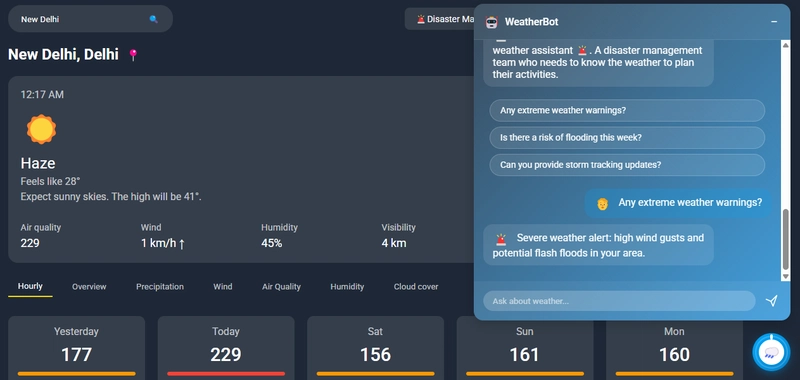What is Scala's Equivalent of Java's ArrayList?
In this article, we will explore Scala's equivalent to Java's ArrayList, addressing your questions about internal representation and how it compares to Java. As a developer with a Java background, transitioning to Scala can feel different at times, but understanding the underlying data structures will help improve your proficiency. Understanding Scala Collections Scala provides a rich set of collections, and while there isn’t a direct equivalent to Java’s ArrayList, Scala's List and Vector can serve similar purposes, with some key differences in implementation and behavior. Internal Representation Java's ArrayList stores elements in a dynamically resizable array, allowing the list to grow as more elements are added. Internally, it manages an array that expands when the capacity is exceeded, which can lead to performance overhead due to copying the array into a new, larger array. In contrast, Scala offers a few alternatives: List – Immutable linked list structure. When you add an element, it creates a new list rather than modifying the existing one. Vector – A more suitable equivalent for a dynamic array. It is also immutable but optimizes for both read and write operations by using a tree structure that allows faster access than a List. Differences Between Java ArrayList and Scala Vector Mutability: Java's ArrayList is mutable, meaning you can modify it in place. Scala's collections, such as List and Vector, are immutable. You create new instances for each change. Performance: For small collections, Lists work fine, but they are not ideal for random access or when frequent modifications are needed. Vectors are better in these scenarios, as they allow efficient access and update operations without needing to copy the entire collection every time. Type Safety: Scala emphasizes type safety and encourages functional programming paradigms, while Java allows for a more imperative style. Code Examples To illustrate how you can use Scala’s collections, let’s look at examples of both List and Vector: Using Scala List If you want a simple, immutable collection: val fruits: List[String] = List("Apple", "Banana", "Cherry") val updatedFruits = "Orange" :: fruits // Prepend println(updatedFruits) Using Scala Vector For a mutable-like behavior with improved performance: val numbers: Vector[Int] = Vector(1, 2, 3) val updatedNumbers = numbers :+ 4 // Append println(updatedNumbers) In these examples, the List and Vector collections are straightforward to initialize and work with, showcasing Scala's ability to handle collections efficiently. When to Use Which? Understanding the differences between Scala's List and Vector will help you decide which to use for your project: List: Use when you require an immutable sequence and do not have intensive modification needs. Great for functional programming paradigms where immutability is a key aspect. Vector: More suitable when you need a mutable-like behavior, with efficient updates and access patterns, especially beneficial for large collections. Frequently Asked Questions (FAQ) Can I use Array in Scala? Yes, Scala does support arrays, but they are mutable by default. You can use them when you require performance over immutability: val array = Array(1, 2, 3) array(0) = 10 // Modify an element Is it better to use Lists or Vectors? The choice depends on your specific use case. For functional programming and when you do not need random access, use Lists; otherwise, prefer Vectors for better performance with large datasets. How do I convert a List to a Vector in Scala? You can easily convert between collections in Scala using the toVector method: val fruitList: List[String] = List("Apple", "Banana") val fruitVector: Vector[String] = fruitList.toVector Conclusion In summary, while Scala does not have a direct equivalent to Java’s ArrayList, it offers robust alternatives such as List and Vector. Each has distinct characteristics that make them suitable for different scenarios, allowing you to leverage powerful functional programming techniques while enjoying Scala's expressive syntax. By understanding these collections and their internal representations, you'll be equipped to make effective choices for your Scala projects.

In this article, we will explore Scala's equivalent to Java's ArrayList, addressing your questions about internal representation and how it compares to Java. As a developer with a Java background, transitioning to Scala can feel different at times, but understanding the underlying data structures will help improve your proficiency.
Understanding Scala Collections
Scala provides a rich set of collections, and while there isn’t a direct equivalent to Java’s ArrayList, Scala's List and Vector can serve similar purposes, with some key differences in implementation and behavior.
Internal Representation
Java's ArrayList stores elements in a dynamically resizable array, allowing the list to grow as more elements are added. Internally, it manages an array that expands when the capacity is exceeded, which can lead to performance overhead due to copying the array into a new, larger array.
In contrast, Scala offers a few alternatives:
- List – Immutable linked list structure. When you add an element, it creates a new list rather than modifying the existing one.
- Vector – A more suitable equivalent for a dynamic array. It is also immutable but optimizes for both read and write operations by using a tree structure that allows faster access than a List.
Differences Between Java ArrayList and Scala Vector
-
Mutability: Java's ArrayList is mutable, meaning you can modify it in place. Scala's collections, such as List and Vector, are immutable. You create new instances for each change.
-
Performance: For small collections, Lists work fine, but they are not ideal for random access or when frequent modifications are needed. Vectors are better in these scenarios, as they allow efficient access and update operations without needing to copy the entire collection every time.
-
Type Safety: Scala emphasizes type safety and encourages functional programming paradigms, while Java allows for a more imperative style.
Code Examples
To illustrate how you can use Scala’s collections, let’s look at examples of both List and Vector:
Using Scala List
If you want a simple, immutable collection:
val fruits: List[String] = List("Apple", "Banana", "Cherry")
val updatedFruits = "Orange" :: fruits // Prepend
println(updatedFruits)
Using Scala Vector
For a mutable-like behavior with improved performance:
val numbers: Vector[Int] = Vector(1, 2, 3)
val updatedNumbers = numbers :+ 4 // Append
println(updatedNumbers)
In these examples, the List and Vector collections are straightforward to initialize and work with, showcasing Scala's ability to handle collections efficiently.
When to Use Which?
Understanding the differences between Scala's List and Vector will help you decide which to use for your project:
- List: Use when you require an immutable sequence and do not have intensive modification needs. Great for functional programming paradigms where immutability is a key aspect.
- Vector: More suitable when you need a mutable-like behavior, with efficient updates and access patterns, especially beneficial for large collections.
Frequently Asked Questions (FAQ)
Can I use Array in Scala?
Yes, Scala does support arrays, but they are mutable by default. You can use them when you require performance over immutability:
val array = Array(1, 2, 3)
array(0) = 10 // Modify an element
Is it better to use Lists or Vectors?
The choice depends on your specific use case. For functional programming and when you do not need random access, use Lists; otherwise, prefer Vectors for better performance with large datasets.
How do I convert a List to a Vector in Scala?
You can easily convert between collections in Scala using the toVector method:
val fruitList: List[String] = List("Apple", "Banana")
val fruitVector: Vector[String] = fruitList.toVector
Conclusion
In summary, while Scala does not have a direct equivalent to Java’s ArrayList, it offers robust alternatives such as List and Vector. Each has distinct characteristics that make them suitable for different scenarios, allowing you to leverage powerful functional programming techniques while enjoying Scala's expressive syntax. By understanding these collections and their internal representations, you'll be equipped to make effective choices for your Scala projects.










































































